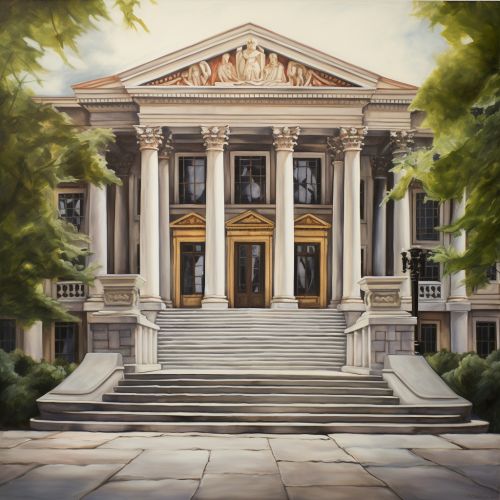Chief Justice of the United States
Overview
The Chief Justice of the United States is the highest-ranking judicial officer in the federal judiciary of the United States. The individual in this position serves as the head of the United States Supreme Court, which is the apex of the American federal court system. The Chief Justice is one of nine Supreme Court justices, but holds a unique role within this body, with responsibilities extending beyond those of the associate justices.


Role and Responsibilities
The Chief Justice has a broad range of duties, both within and outside the Supreme Court. Within the court, the Chief Justice presides over oral arguments, leads the discussion in the justices' private conference where decisions are made, and has the authority to assign the writing of opinions in cases where he or she is in the majority. The Chief Justice also has a significant role in shaping the court's docket, or schedule of cases to be heard.
Beyond the Supreme Court, the Chief Justice serves as the head of the federal judiciary, responsible for overseeing the efficient operation of the federal courts. The Chief Justice also holds the position of Chancellor of the Smithsonian Institution, and presides over impeachment trials of the President of the United States in the Senate.
Appointment and Tenure
The Chief Justice is appointed by the President of the United States and must be confirmed by the United States Senate. There is no set term limit for the Chief Justice; they serve until they choose to retire, are impeached and convicted, or pass away. This lifetime tenure is intended to ensure judicial independence.
Historical Overview
The office of the Chief Justice has been held by 17 individuals since the inception of the Supreme Court in 1789. The first Chief Justice was John Jay, and the current Chief Justice, as of 2021, is John G. Roberts Jr.. The longest-serving Chief Justice was John Marshall, who served for 34 years in the early 19th century and is often credited with establishing the Supreme Court as an equal branch of government.
Influence and Legacy
The influence of the Chief Justice extends beyond their tenure, as their legal opinions and interpretations of the Constitution continue to shape American law and society. Some Chief Justices, such as Earl Warren and John Marshall, have left particularly profound legacies, with their court decisions leading to significant changes in American society and law.
